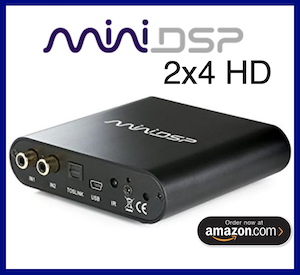-
AUDIO VIDEO PROCESSING, SETUP & ENVIRONMENTOfficial REW (Room EQ Wizard) Support Forum Audiolense User Forum Calibration Equipment Auto-EQ Platforms / Immersive Audio Codecs Video Display Technologies / Calibration AV System Setup and Support Listening Room / Home Theater Build Projects Room Acoustics and Treatments AV Showcase Movies / Music / TV / Streaming
-
AUDIO VIDEO DISCUSSION / EQUIPMENTHome Theater / Audio and Video - Misc Topics Essence For Hi Res Audio AV Equipment Advice and Pricing Awesome Deals and Budget AV Equipment AV Receivers / Processors / Amps UHD / Blu-ray / CD Players / Streaming Devices Two Channel Hi-Fi Equipment DIY Audio Projects Computer Systems - HTPC / Gaming HD and UHD Flat Screen Displays Projectors and Projection Screens AV Accessories Buy - Sell - Trade
Navigation
Install the app
How to install the app on iOS
Follow along with the video below to see how to install our site as a web app on your home screen.
Note: This feature may not be available in some browsers.
More options
You are using an out of date browser. It may not display this or other websites correctly.
You should upgrade or use an alternative browser.
You should upgrade or use an alternative browser.
REW soundcard setup
- Thread starter Harrycr
- Start date
Which OS are you using?Thanks
To use Java is it already on laptop?
ASIO, is it better, keeping in mind I have no HDMI?
If you are running Windows 10 64bit, don't forget to update your CI1 soundcard with the latest Steinberg drivers at CI1 Updates and Downloads | Steinberg before downloading the latest version of REW which includes a dedicated Java.
To use Java is it already on laptop?
the latest version of REW which includes a dedicated Java.
ASIO is better.ASIO, is it better, keeping in mind I have no HDMI?
Using Windows 8.1Which OS are you using?
If you are running Windows 10 64bit, don't forget to update your CI1 soundcard with the latest Steinberg drivers at CI1 Updates and Downloads | Steinberg before downloading the latest version of REW which includes a dedicated Java.
Why install before updating REW?
Have been updating as I go but haven't setup to use currently other things going on.
Thanks
ThanksASIO is better.
What's the benefits of ASIO without HDMI?
Which ASIO drivers are best and reliable?
I'd be curious to know how HDMI would relate to the souncard audio performance...?What's the benefits of ASIO without HDMI?
What's the benefits of ASIO without HDMI?

Audio Stream Input/Output - Wikipedia
 en.wikipedia.org
en.wikipedia.org
The one made by the manufacturer of your external sound card.Which ASIO drivers are best and reliable?
Thanks for your reply.HDMI or something else, USB, for example, is irrelevant to the question of using ASIO. When using ASIO, the delay between an external sound card connected to the USB port and REW, for example, is minimal. The windows mixer and other software modules for working with sound are disabled. Unlike the java.
Audio Stream Input/Output - Wikipedia
en.wikipedia.org
The one made by the manufacturer of your external sound card.
jschwender
Member
More
- Front Speakers
- Nubert digital pro
- Other Speakers
- Philips dss940
A major difference is that Windows sound system does not handle any sample frequency above 48k, even if you choose it in the driver: it does not. It pretends to to that, you get a stream with higher frequency, but it is actually sampled with 48k and magic calculation adds just guesswork! Under windows, anything other than ASIO is complete crab, not only for measurement!
John Mulcahy
REW Author
- Joined
- Apr 3, 2017
- Posts
- 8,441
That's not true in general, sample rates above 48k can and do work as they should with Windows drivers. If multiple clients access a device behaviour may change, the default format in the Advanced tab of the device Audio properties may then be applied.A major difference is that Windows sound system does not handle any sample frequency above 48k, even if you choose it in the driver: it does not. It pretends to to that, you get a stream with higher frequency, but it is actually sampled with 48k and magic calculation adds just guesswork! Under windows, anything other than ASIO is complete crab, not only for measurement!
Popular tags
20th century fox
4k blu-ray
4k uhd
4k ultrahd
action
adventure
animated
animation
bass
blu-ray
calibration
comedy
comics
denon
dirac
dirac live
disney
dolby atmos
drama
fantasy
hdmi 2.1
home theater
horror
kaleidescape
klipsch
lionsgate
marantz
movies
onkyo
paramount
pioneer
rew
romance
sci-fi
scream factory
shout factory
sony
stormaudio
subwoofer
svs
terror
thriller
uhd
ultrahd
ultrahd 4k
universal
value electronics
warner
warner brothers
well go usa












